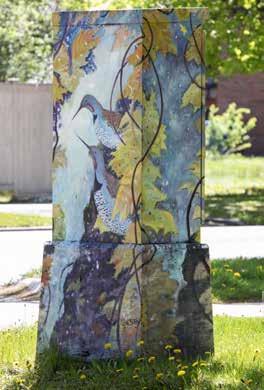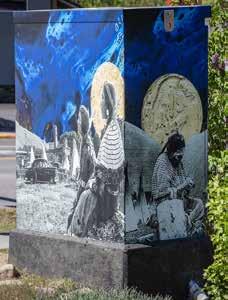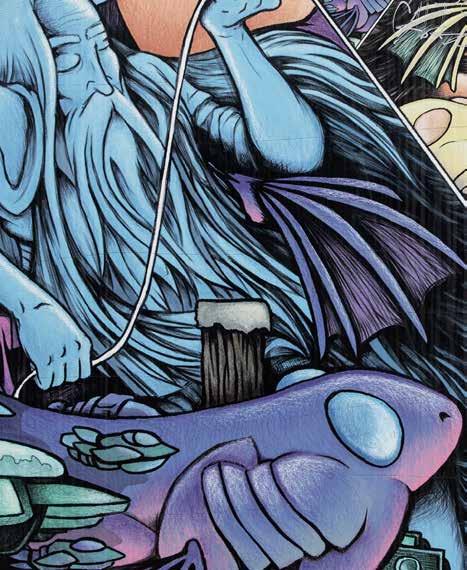
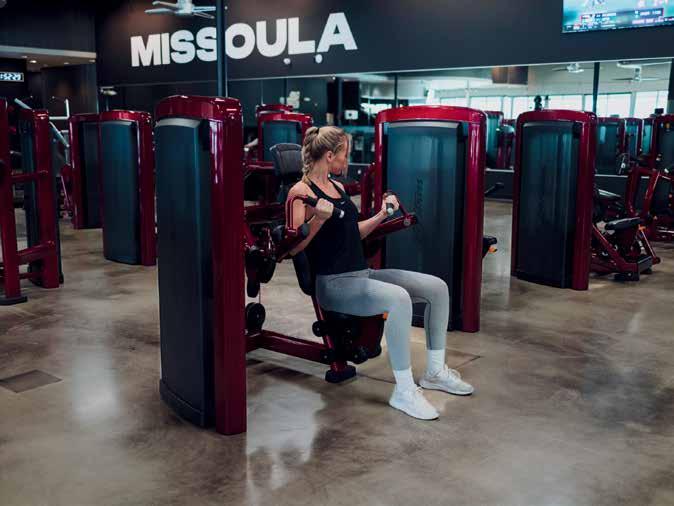









I started writing this month's letter about my mustang Kodiak, and all the gratitude that was reborn this past summer. I sent him for some training and filled my schedule with more riding. I wanted to publicly thank my riding coach and trainer Katy Nichwander for getting me back on the horse in more ways than one. She met Kodiak and I where we were, and what a gift it is to find another human being that just sees, accepts, and builds from there. What a tremendous gift that is in any arena of life.

While my family, hobbies, and sports take up the majority of my life, it didn't sit right with me to not give light to a larger picture in the wake of what felt like a heavy turn of season. The Bitterroot Valley lost a very young boy, and while I didn't know him or his family, I wept for them. I wept for our country on numerous occasions, too. For a hundred different reasons, I wept.
Whenever I pull a themed issue together, I truly don't know what the final shape will be until it's made. A business person would say that's risky but an artist would say it's art. The art of this issue is that these "Gratitude" themed pages came together in a way that shouted community. I think every story has that word in it—community. When we are in line at our favorite coffee hut or we're standing with our boarding passes in hand, or when we open our door to greet a loved one, we do not consider all the things that we disagree on or are separated by. We are there for mutual interest, for joy. We are always pursuing our chance at joy, and I want to pause this month to hold space for our continued ability to do that. Despite everything.
I want to bring this letter full circle by coming back around to my horse, Kody. The relationship between person and animal breaks the barrier of spoken language. It goes off a feeling. Tension, nervousness, excitement, and ease can be felt through your seat bones, your fingers, even through breath. Horses, though powerful enough to pull a post straight from the ground, are also sensitive enough to feel a fly land on their back. The closer attention we pay to that sensitivity, the closer we get to enjoying the ride.

CHELSEA LYN AGRO, EDITOR @MVLMAGAZINE
November 2025
PUBLISHER
Mike Tucker | MTucker@CityLifestyle.com
PUBLISHER ASSISTANT
Amanda Tucker | Amanda.Tucker@CityLifestyle.com
EDITOR
Chelsea Lyn Agro | Chelsea.Agro@CityLifestyle.com
STAFF PHOTOGRAPHER
Rick Szczechowski | RrSzczechowski@Gmail.com
CONTRIBUTING WRITERS
Chelsea Lyn Agro, Marko Capoferri, Dr. Stephanie Raven
CONTRIBUTING PHOTOGRAPHER
Renske Photo
CEO Steven Schowengerdt
President Matthew Perry
COO David Stetler
CRO Jamie Pentz
CoS Janeane Thompson
AD DESIGNER Evan Deuvall
LAYOUT DESIGNER Kelsey Ragain
QUALITY CONTROL SPECIALIST Anna Minnick


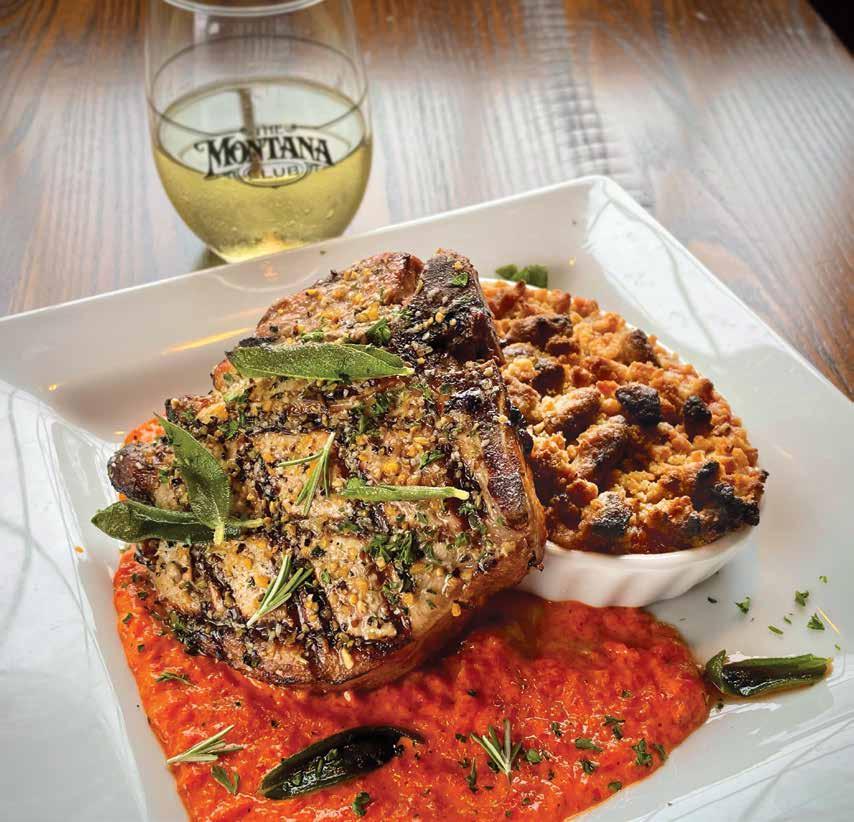
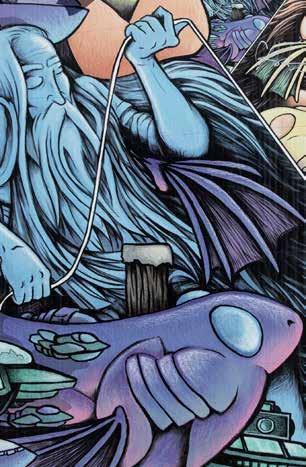

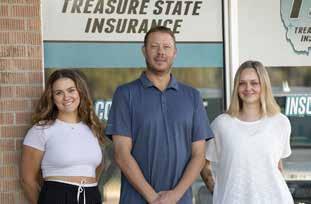

Justin
Dr.
Bitterroot
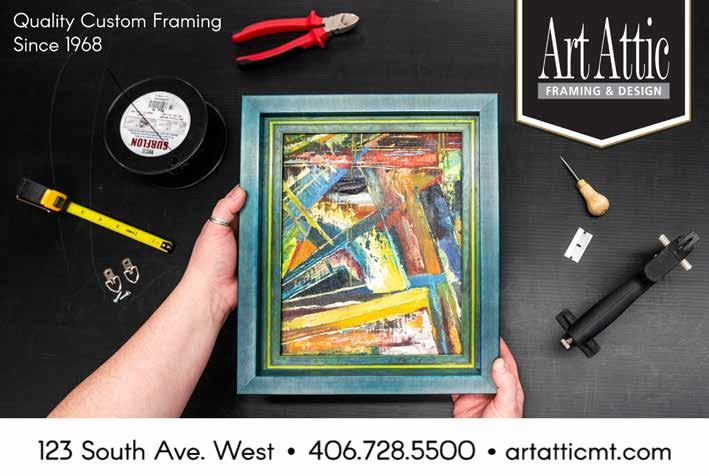
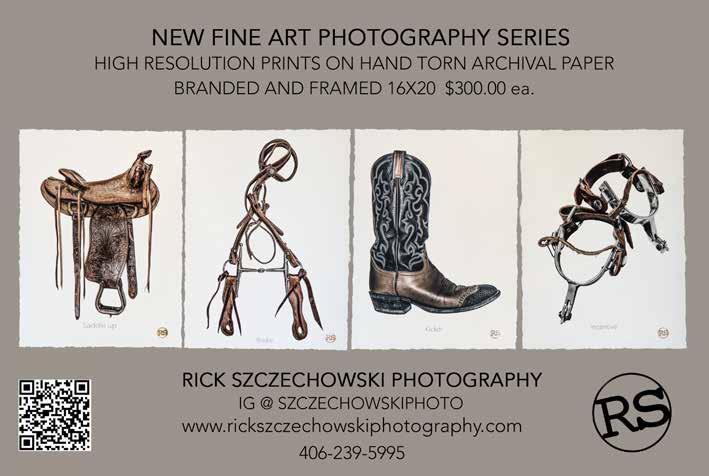

Put on your best dress and lasso the boys for a 'Mommy & Son' dance on Friday, November 21 from 5:30 to 7:30 p.m. at the City Life Center Gym. Tickets are available online or at the door for $28 per couple (plus processing fees). Grandmothers are welcome to join, too! Dress code is whatever you can bust a move in and all proceeds go to local charities. Join in on a low-key night of dancing, fun, and treats!

Let's get that appetite primed and ready for a feast! Join in on this year's Turkey Trot on Thursday, November 27 at 9:30 a.m. at the University of Montana Campus Rec (125 East Main Street). Run or walk around the course that travels around the campus and along the Clark Fork River Trail. Donations and a portion of the event proceeds go to the Missoula Food Bank.





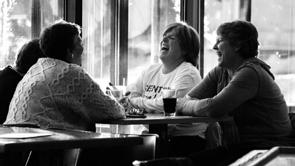






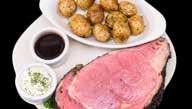
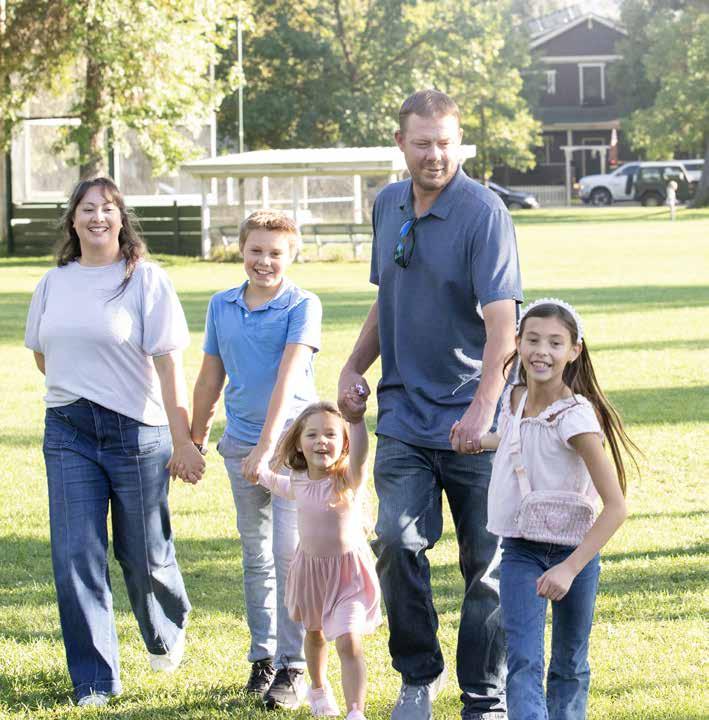
ARTICLE BY MARKO CAPOFERRI PHOTOGRAPHY BY RICK SZCZECHOWSKI
Insurance. Exciting stuff, huh? Probably not for many of us. More likely it’s just another bill to be taken care of and ignored for the next 30 days, just one more expense on the monthly ledger. And it usually is just that. That is, until

“We're protecting your assets, your homes, some of the most valuable things you own."
something goes horribly wrong. Then, insurance might be the difference between a slight inconvenience and major trouble, and having the right kind and level of insurance can make a world of difference.
Enter Justin Ross and Treasure State Insurance, a fast-growing insurance brokerage here in Missoula whose job it is to demystify the tangled web of insurance, be it auto, business, homeowner’s or renter’s, and to make sure folks are set up with the policies they need should the unexpected come to pass.
“I mean, insurance is insurance. I think it’s just as important as doing your taxes,” Justin says. “We’re protecting your assets, your homes, some of the most valuable things you own. I think that’s the biggest thing. Most people, in my experience,
don’t understand insurance, and so they trust us as the expert, if you will, to kind of guide them and help them.”
While a big part of Treasure State Insurance’s business is helping clients to be prepared, another of Justin’s roles is to be present for the community when things do go wrong and folks have to enter into the labyrinth of policies, deductibles, exclusions, liabilities, and limits. Treasure State’s lack of affiliation keeps them nimble, able to keep their neighbors’ wellbeing front and center without the demands of the bottom line.
“[July 2024] was a huge shock to people, when we had that major windstorm,” Justin says. “We got an influx of new clients because they found out that
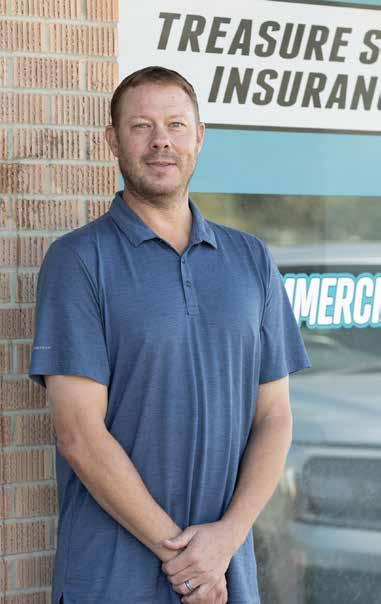
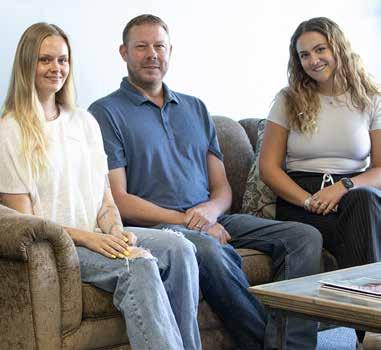
they weren’t accurately insured. They were having to fight the insurance carriers, who don’t really have their best interests in mind; it’s a business for [the carriers]. So having an independent insurance agent that can go to bat for you, to stand on your side and help you, I think is really important.”
“With all the carriers we’re appointed by, there’s not a single carrier that I work with that I wouldn’t insure myself through,” he continues. “I think that’s also important: where we’re placing you is an accurate coverage for your personal needs.”
Given the ambivalence many people probably feel about your average insurance agent, the fact that we have someone here in town who looks out for “your personal needs” is a sign that there just might be someone in the industry who really cares. It’s an industry that’s easy to mischaracterize when insurance is, again, largely unseen apart from a deduction made every four weeks out of necessity.
“When I first started, I think one of the biggest things for me was getting away from the thinking people have that insurance is like a ‘used car salesman’ kind of job,” Justin says.
For Justin, it’s the face-to-face, everyday interactions with people that really make the job, and it’s not something you’re going to get with a major corporation. Treasure State Insurance, on the other hand, sits in a small, unassuming office space on SW Higgins Avenue, and you can walk right in and talk to them.
“It’s easier to come to our office and sit here and have a conversation and actually go over your personal needs than call GEICO,” Justin says. “And when something happens, good luck. I think that’s what
“I’m very old-fashioned in the way I do business. If you take care of people, they’ll take care of you."
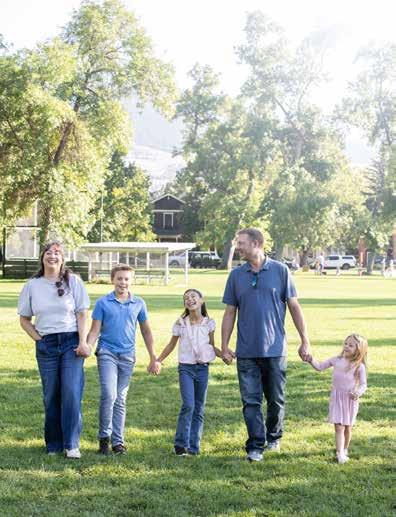
keeps us busy, is that people still like that personal interaction. We’re in the neighborhood, we have relationships with these people.”
“You know, with AI and things like that coming around so quickly and evolving,” he continues, “I’ve had this conversation with a lot of people in the industry: ‘when are we going to become irrelevant?’ And everybody has the same answer: it’s not going to happen. Because nobody understands insurance, they still want to talk to somebody, they still want to see our face.”
You can’t separate Treasure State Insurance from Missoula. The company was born here, and it’s the town’s tight-knit vibes that make the
kind of operation Justin runs here seem almost as much a community service as a business.
“It still is what I would consider a small community,” Justin says. “I’m very old-fashioned in the way I do business. If you take care of people, they’ll take care of you. The proof is how fast we’ve grown; it’s just that we’re taking care of people and they’re telling people. The word of mouth and the community support has been great. Being a family man here in town and living here almost 20 years, it’s important to us to do our best to take care of people. Again, these are peoples’ businesses, these are peoples’ homes. They have a lot wrapped up in that.”


Established in 1995, by Jill Olson, PT, a 5th generation Missoulian. Peak Performance has diverse specialties ranging from sports medicine and orthopedics, to vestibular and concussion therapy as well as Women’s health, breast cancer, and lymphedema rehabilitation. We are conveniently located near Southgate Mall. We invite you to stop by and see how Peak Performance Physical Therapy is here to help you!
To learn more or to schedule a private/personal consultation, call us at 406-542-0808.

www.peakpt-mt.com V PeakPerformance_Missoula B PeakPerformanceP T




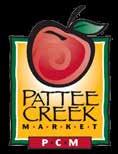

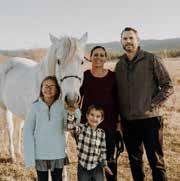

The holidays have a way of calling us back to what matters most—faith, family, compassion, and the quiet but powerful act of giving. As lights go up and calendars fill, there are still many who sit in silence, carrying burdens too heavy to bear alone. But what if this season, you could be the spark that changes everything for someone else?
The founders of City Lifestyle, through their private foundation, are once again launching its annual Christmas Giving Campaign—a heartfelt effort to seek out and support individuals and families who have quietly fallen through the cracks. The mission is simple: to bring light, dignity, and hope to those who need it most.
Since its beginning just four years ago, this initiative has grown from a humble idea into a life-changing movement. Last Christmas alone, more than 200 families across the country received unexpected support—financial relief, but also something even more powerful.
“We don’t just send checks,” says Steven Schowengerdt, CEO and founder of City Lifestyle. “We send a message: You are seen. You are loved. And you are not forgotten.”
Together with City Lifestyle President Matthew Perry, Steven has helped shape this into a tradition that goes far beyond charity. “This is about community,” Matthew adds. “We believe we’ve been blessed, so now we get to be a blessing.”
Every story begins with a nomination. Often, it’s a neighbor, coworker, friend, or teacher—someone who’s been quietly carrying too much for too long. One past recipient, after receiving unexpected support during a time of deep personal struggle, wrote:
SCAN TO NOMINATE

“We send a message: You are seen. You are loved. And you are not forgotten.”
“Beyond the very practical solution of receiving funds to fix my car, this thing you guys worked together to do is bigger than that. I carry the Christmas card you sent in my purse. When things get really hard, I pull it out and remember what it felt like to be seen. That card represents hope— that change for the better is possible. I’m not sure how many people get to carry hope around in their purse. But I do.”
Another wrote in after her husband was diagnosed with aggressive brain cancer and unable to work:
“This support has blessed our family not only financially, but emotionally and spiritually as we trust God to meet our needs throughout this difficult time. Thank you to our anonymous friend and to your foundation. What a joy and gift to be part of God’s family!”
Each year brings countless stories like these—real lives touched by simple acts of kindness. Some use the funds to pay overdue bills, others to afford groceries, medication, or repairs. But no matter the circumstance, the impact is the same: hope is restored.
This season, you have the opportunity to be part of that. The campaign is now open to nominations—completely confidential and prayerfully considered. Whether it’s someone battling illness, facing unemployment, or just in need of a helping hand, you can bring them a moment of grace that will ripple far beyond Christmas morning.
“Knowing my mom was chosen filled my heart with indescribable joy,” said another past recipient. “Your generosity doesn’t just brighten her life; it inspires hope and faith in all of us. It enables her to stay in her home and get back on her feet.”
Nominations are open from November 1st to December 5th, 2025. To submit someone you know, simply scan the QR code or visit @CityLifestyle on Instagram, where you’ll find the nomination form in the bio.
This holiday season, let’s give more than gifts. Let’s give each other the gift of being seen. Because sometimes, the smallest gesture becomes someone’s greatest miracle.
To nominate someone in need, visit: KingdomBuildingFoundation.org or scan the QR code.
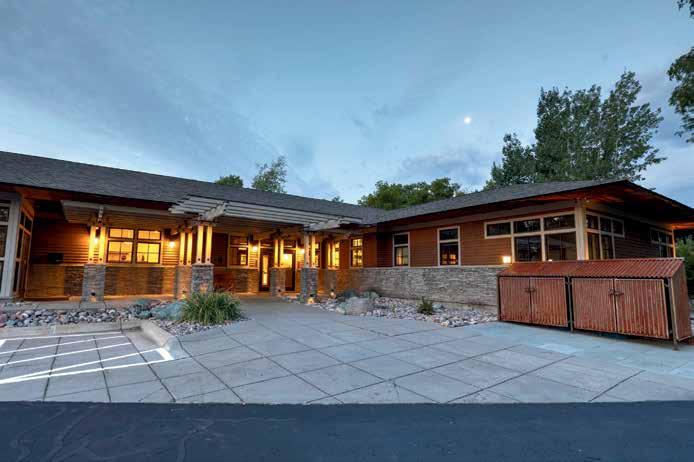


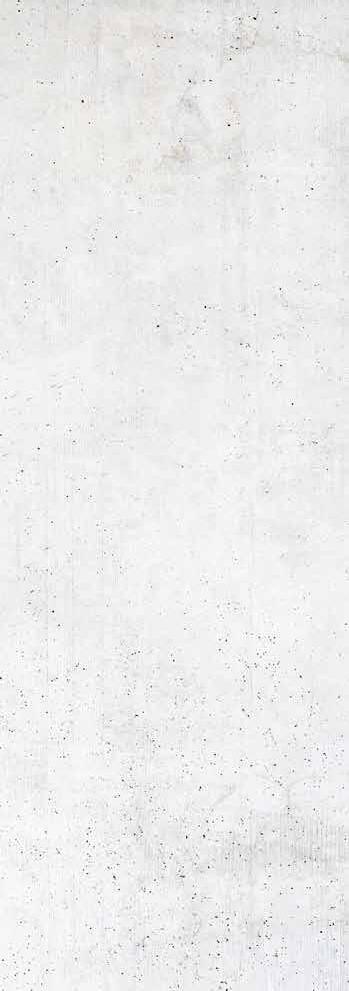


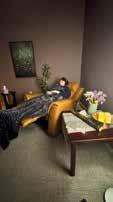





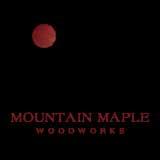









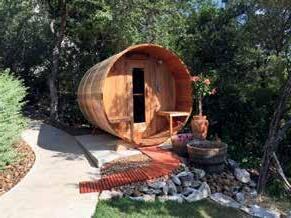
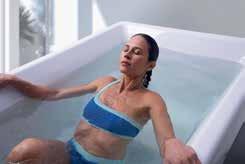


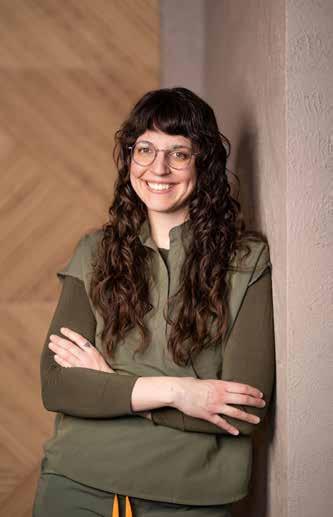
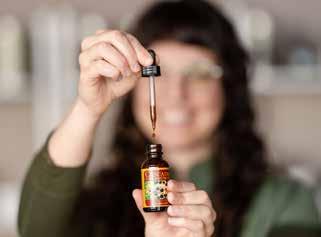
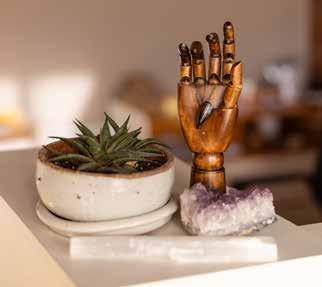

Gratitude is more than a fleeting feeling—it’s a daily practice that shapes how we connect with ourselves, with others, and with the natural world. When I reflect on what first drew me to naturopathic medicine, gratitude is at the center. I wanted the knowledge and tools to care for my own health and to support the wellbeing of my family, friends, and community. Each patient I meet reminds me that healing is never a solitary act—it is something we build together through trust, presence, and shared effort.
In Braiding Sweetgrass, Robin Wall Kimmerer writes: “Gratitude cultivates an ethic of fullness, but the economy needs emptiness.” This resonates deeply. We live in a culture that often tells us we’re incomplete unless we buy more, do more, or achieve more. Gratitude helps us step out of that cycle by reminding us to notice what is already working—our bodies’ ability to adapt, the healing power of rest and movement,
the support of community, and the resources nature has always provided. When we see what’s already present, our choices come from a place of abundance rather than lack.
For thousands of years, humans have relied on natural remedies, food, and community connection to support health. These practices are not trends—they are part of our shared human story, passed down and refined through generations. At Aralia Health, we carry this legacy forward by blending traditional healing knowledge with evidence-based medicine.
For me, gratitude is both a practice and a compass. It grounds me, strengthens my relationships, and keeps me focused on what matters most: supporting my loved ones, my patients, and the broader community so we can thrive together.
Dr. Stephanie Raven








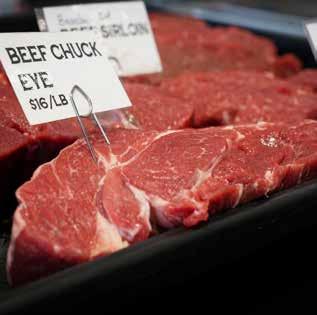








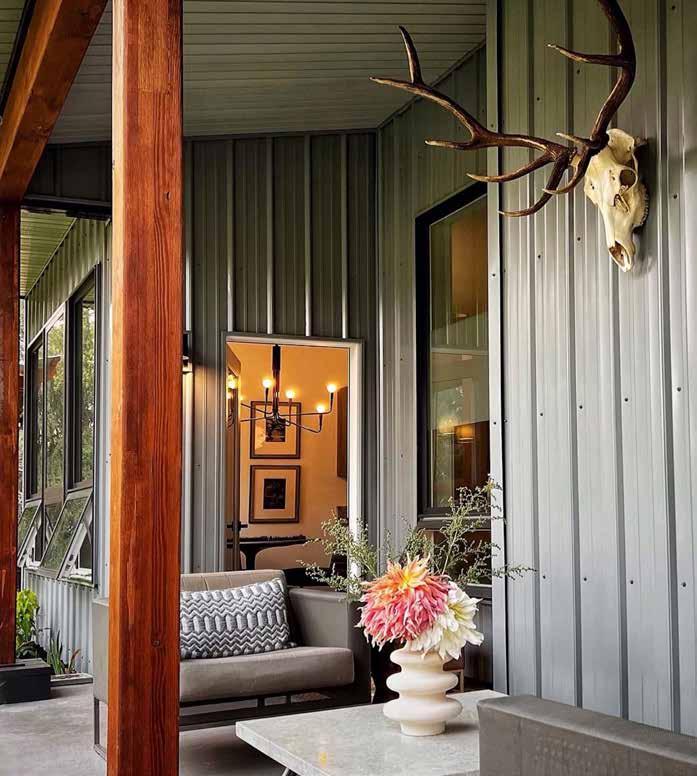
Bitterroot couple designs a home that they don't need a vacation from
ARTICLE BY CHELSEA LYN AGRO PHOTOGRAPHY BY RICK SZCZECHOWSKI
Rick Szczechowski and Donna Godert are visionaries of our modern day. He, a lifelong photographer, and she, an interior designer who just struck a recent chord of fame when she designed the home that won the Peoples Choice Award in the 2025 Missoula Parade of Homes. The house had a mountain modern vibe, thoughtfully complete with warm but not-to-be-overlooked details at every angle. And as it
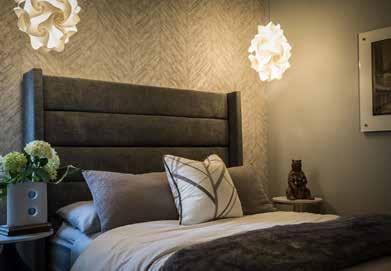

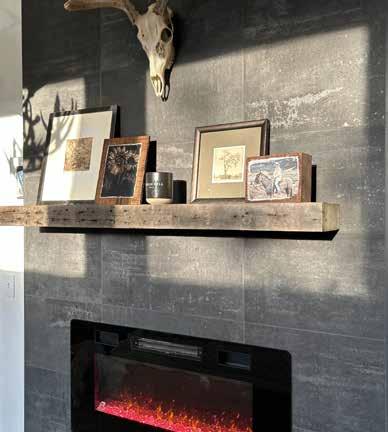
turns out, this truly is Donna’s specialty since having moved from California to Montana with Rick, who has adorned their own mountain modern home in Lolo with fine art photography.
“I was a nervous wreck because it was my own home and I wanted it perfect,” says Donna, recounting how she inadvertently put her lifetime of design skills on full display for the builder of their home when she asked (maybe insisted) if she could have some liberties with customization. A flood of samples and photos came together in Donna’s mind—a collection of places peppered throughout the country. Her vision, which is second nature considering her professional expertise, sought out the materials, textures, and colors that were needed to achieve a fully curated home of past lives while embracing their new one.
The biggest souvenir is the architecture—an Eichler-esque design, which is inspired by modernists with midcentury roots. “They’re fabulous,” says Donna. “They remind us of Palm Springs. Our first love with the house was the architecture. We are elated to be here in Lolo…we used to live in the city, we don’t need that anymore in our life. We like living with cows.”
The notable slanted roof, steel, and color palate of the exterior is reflective of what’s inside. The home is situated in what feels like a wildlife sanctuary with a marsh-like foreground, beside the long driveway Donna always pictured in a “someday” home. Two ponds, mature birches, and aspens complete the natural surroundings. And like every good Montanan (native or transplant), they thrive in their outdoor spaces.
A barbecue shack lends the opportunity to carry on what’s been a 20-year tradition for the creative couple. “We use that year round,” says Rick. “It could be like 10 degrees outside and we’re out there...Every Friday night—almost every Friday— we’ll make pizza and wings in that pizza oven. It’s like a Buffalo tradition, pizza and wings.” And since Rick is originally from Buffalo, New York, the long winters aren’t a cause for concern.
A sauna is the latest addition. Aside from moving a fence line to gain more livable space and having a base built, Rick and Donna designed and made another staycation dream space. It’s a no-phone-allowed capsule where daily rejuvenation awaits. The day fades away and a new daily practice of peace is born.
“Sharing our talents and creativity with everyone here, and just working with these builders—the gratitude just kind of amplifies how we live. Be kind, be creative, be generous and give,” says Donna, who in her next breath, invites my husband and I over for pizza night.
The thing that both Donna and Rick have achieved is not insurmountable. Sometimes we forget that our home turf is really a nest. It should be fluffed, spruced up, added to, subtracted from, and constantly evolving to hold the best version of ourselves. Gratitude comes easy when we
recognize what we have to work with, what we can offer, and what comes our way.
On any given evening, Donna can be found on one of her teak Adirondack chairs, sipping a glass of wine as the sun sinks down over the mountains. And Rick might be throwing an axe inside (yes, they have axe throwing because why not?).
“We traveled so much when we first married and when we were younger. We have no desire—outside of Montana— to travel,” says Donna. “We went up to Glacier and it blew our minds. We just want to stay here. We love our house so much. Rick has always said, ‘My last house—I want it to be a place where we don’t need to feel like we need to travel anywhere because we love where we live.’”Suffice it to say that that goal has been met, and we can all be inspired to make our home feel more like the paradise it is.”
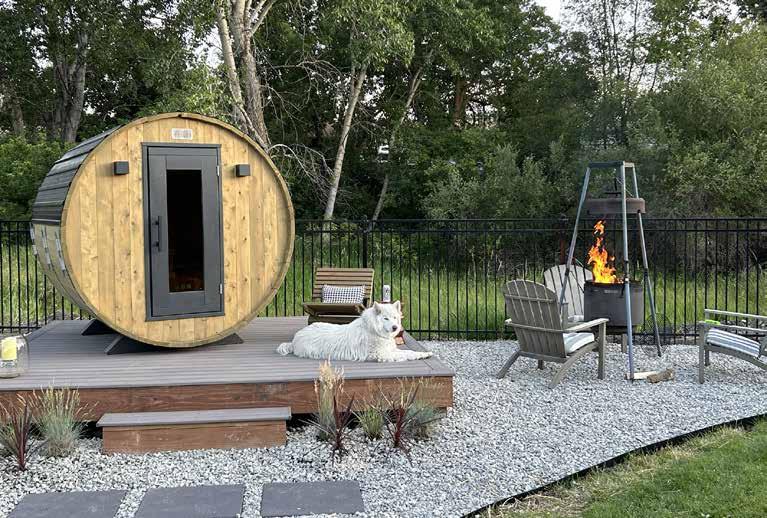

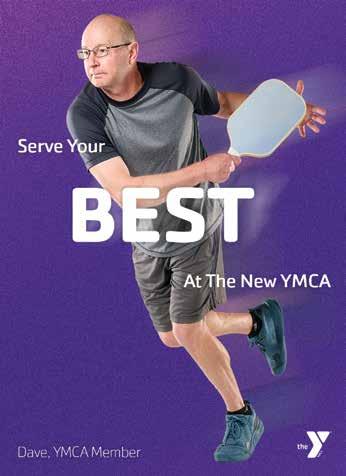

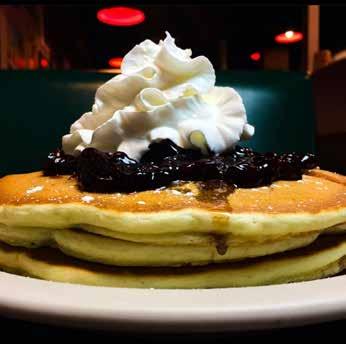

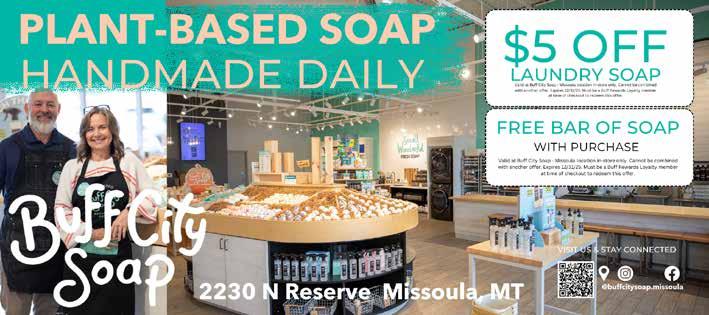


Patients Live
Today’s advanced endodontic treatments and materials can give you a
more complete smile that can last you a lifetime. Our team at Missoula Endodontics , PC. will help revitalize and maintain your teeth and gums, giving you the smile you’ve always wanted.

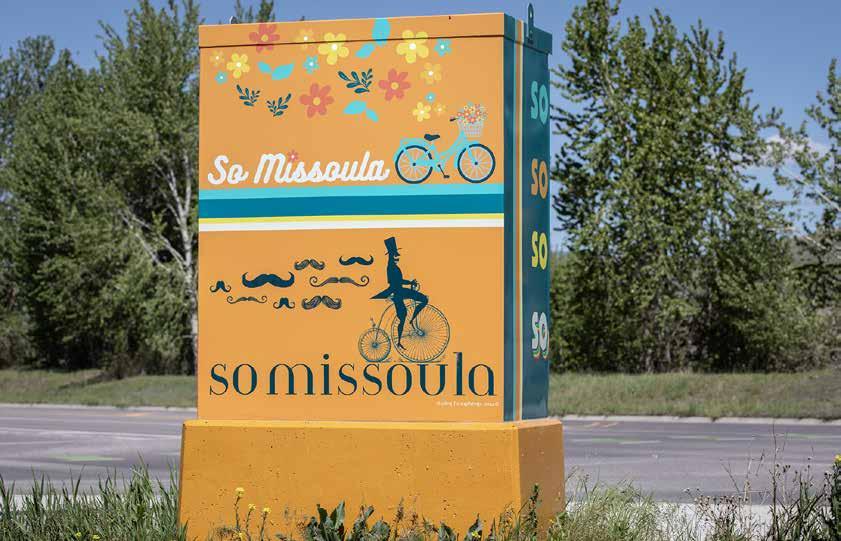

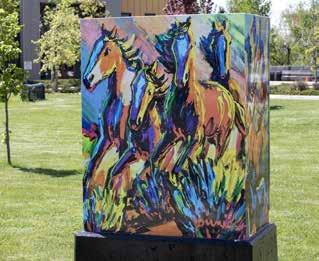
Traffic signal boxes in Missoula are another canvas for our local artists

Next time you’re waiting at a stoplight in Missoula, look around for a decorated box. Perhaps you’ve spotted the popcorn machine at the corner of Mullan and West Broadway or the herd of neon horses just a few blocks down near Russell. However, if you’ve never noticed those boxes until they were decorated, you’re not alone. These traffic signal boxes (TSBs) have been transformed from unremarkable, government green utilities to pieces of art since 2008.
“We started out with 72 boxes,” said Kathi Olson, head of Missoula’s Public Art Committee. Kathi credits Paula Goldberg, the artist behind the popcorn machine, for the inspiration to start the project. “She came to me and said, ‘We do these in my hometown in Missouri, and we should do it in Missoula.’ So, we brought the idea before the city’s Public Art Committee, and they voted it in. Then, we had to take it to the highway department and any public entities involved with the boxes. They saw the benefits
and gave approval shortly after,” Kathi said. Since then, all of the entities involved have been quick to approve new artwork for more boxes each year. The decision is easy, given that decorating the boxes has shown to decrease graffiti by 90%. “I think people respect the artists’ work,” said Kathi.
The artwork’s visual impact is one aspect considered by the committee when selecting artists, but how that design will mesh with the box’s structure is important. So, in addition to the application, artists must complete a 3D model of their design. “We’ve found that part to be crucial,” said Kathi.
"THE DECISION IS EASY, GIVEN THAT DECORATING THE BOXES HAS SHOWN TO DECREASE GRAFFITI BY 90%. I THINK PEOPLE RESPECT THE ARTISTS’ WORK." KATHI OLSON
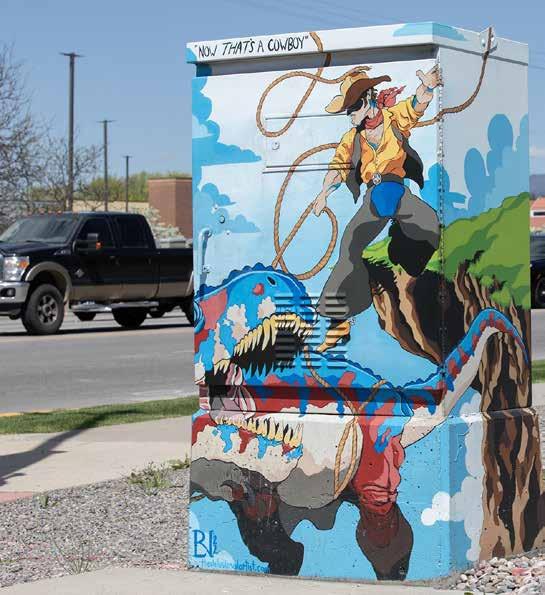
“When someone sees how their work will wrap around the box and has to incorporate elements like ventilation slats and access doors, they have a chance to adapt their design.” Even though artwork must be customized to the boxes, the committee encourages applications from all types of artists working in any medium. “If you’re a painter, you can paint directly on the boxes. Sculptors and photographers can take pictures of their work and transfer that to a vinyl
wrap. Digital creations transfer to vinyl easily, as well,” she said.
When enough boxes are ready for a makeover, the city’s Public Art Committee sends out an art call and gathers people with a wide range of interests to help select the winners. “The committee is inclusive,” explained Kathi. “Before we put out an art call, we meet with people and businesses in the neighborhood to invite them into the selection process. And, of course, representatives from multiple public entities are included to guarantee that any type of decoration won’t harm the functioning of the boxes.”
This year marks the 40th anniversary of the creation of Missoula’s Public Art Committee (originally established by Mayor Toole). The committee is charged with “developing a collection of public art
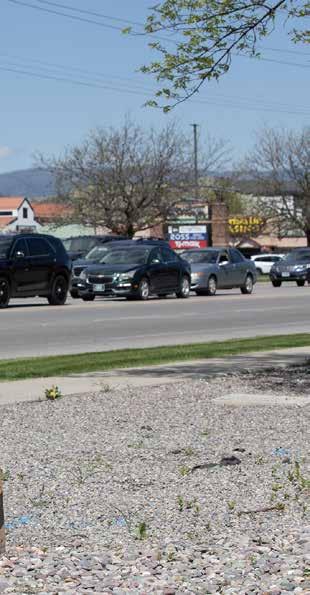
that is of the highest quality, that encompasses a broad aesthetic range reflecting the city and its citizens, improves the quality of life in the area, accessible to all individuals, and is a source of pride to all residents.” “The TSB project has worked well for that,” said Kathi. “It’s also a chance for artists to understand the public art process and decide if they want to get involved with more public installations. Public art is different from gallery-style art. There’s the aesthetics, but there’s also
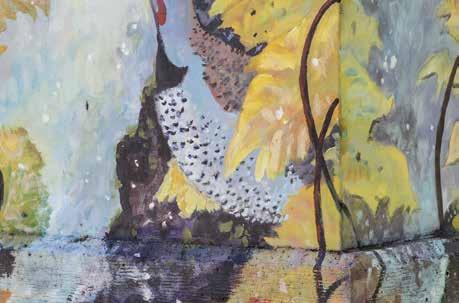

public health and safety to consider. There are more parameters artists have to adhere to,” she said.
Funding for public art often comes from several different sources, and the TSB project is no exception. The majority of funds come from private donations (often from people living in the neighborhoods near each box). In addition, neighborhood grants and redevelopment funds help to make up the difference, so the committee can pay a meaningful award to each artist for their work. Fitting those pieces of the financial puzzle together, along with the enduring chutzpah of the Public Art Committee members, has kept the project going for 17 years. In fact, other Montana towns look to Missoula as a model for creating their own box programs. “We’ve helped
five to 10 communities a year; most in Montana but some across the country, as well,” said Kathi.
To transform a drab public utility box into a work of art seems apropos for Missoula, where we imbue our public spaces with creativity. “Artists have been out there, under tents, creating their artwork in rain, sleet, and snow. People will drive by and honk their horns in encouragement. I’ve seen many a dad bring their child soup,” said Kathi. With dedicated volunteers behind the scenes and resilient artists on the corners making their visions into reality, Missoula drivers have a pleasant surprise to enjoy while waiting at an otherwise boring red light. You can see pictures of all the boxes at PublicArtMissoula.org/traffic-signal-boxes.
